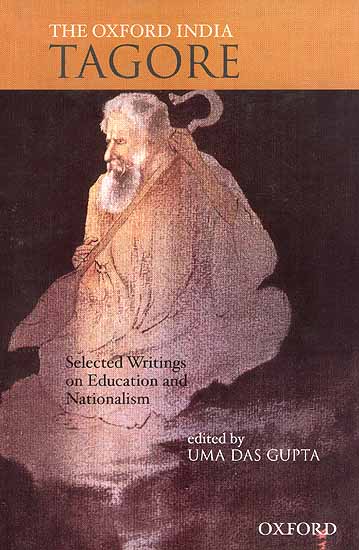Education Philosophy
Tagore was a modern educator. He prioritized individual experience over objective knowledge of the external world and shaped both a method of learning and a curriculum based on being-in-the-landscape. Tagore founded three distinct institutions: a school for primary education, a World-University to promote visual and performance arts, and an Institute for Rural Reconstruction. This page contains a curated list of select books which highlight his teaching philosophy and also his intention behind establishing each institution. The books have been organized institution wise.
Santiniketan
In 1901, he established Bolpur Brahmacharya Asram at Santiniketan, a residential school on the old pattern of Indian asram. Later, this school became known as Patha-Bhavan.
-
 Shantiniketan, the Bolpur school of Rabindranath Tagore
by
Call Number: 370.954 P31S
Shantiniketan, the Bolpur school of Rabindranath Tagore
by
Call Number: 370.954 P31S -
 Tagore : selected writings on education and nationalism
by
Call Number: 370.954 T129o
Tagore : selected writings on education and nationalism
by
Call Number: 370.954 T129o -
 Music and dance in Rabindranath Tagore's education philosophy
by
Call Number: 891.44 T12DG346
Music and dance in Rabindranath Tagore's education philosophy
by
Call Number: 891.44 T12DG346 -
Rabindranath Tagore : perspectives in time by
Call Number: 891.44 T12DR114
Sriniketan
In 1922, he set up the Palli-Samgathan Vibhag (Institute of Rural Reconstruction) at Surul, one mile west of Śantiniketan, with Leonard Knight Elmhirst as its first Director and Rathindranath Tagore as Elmhirst’s associate. The objective was to facilitate and empower villages in becoming economically self-sustained communities. Rathindranath Tagore was trained in Agricultural Science at the University of Illinois, Urbana-Champaign.
-
Experiments in rural reconstruction byCall Number: 309.263 B22E
-
The Tagore-Geddes correspondence byCall Number: 370.924 T12t
-
Poet and plowman byCall Number: 630.924 EL6E1
Visva-Bharati
The idea of asram evolved into an idea of a university and, in 1921, he established Visva-Bharati or World University, dedicated to promoting performing and visual arts.
-
 Santiniketan : the making of a contextual modernism
by
Call Number: Q. 709.54074 Sa59
Santiniketan : the making of a contextual modernism
by
Call Number: Q. 709.54074 Sa59 -
 The Visva-bharati quarterly
Call Number: 059.54 VIThe Visva Bharati Quarterly was founded by Rabindranath Tagore in 1923. It is a peer reviewed journal published by Visva-Bharati and maintains an interdisciplinary thrust from its inaugural issue. It publishes articles on a wide range of issues including languages, social sciences, translation studies, social work, rural reconstruction, music, performance, visual arts, film and media studies, education and science.
The Visva-bharati quarterly
Call Number: 059.54 VIThe Visva Bharati Quarterly was founded by Rabindranath Tagore in 1923. It is a peer reviewed journal published by Visva-Bharati and maintains an interdisciplinary thrust from its inaugural issue. It publishes articles on a wide range of issues including languages, social sciences, translation studies, social work, rural reconstruction, music, performance, visual arts, film and media studies, education and science. -
 Visva-Bharati news
Call Number: 059.54 VIS
Visva-Bharati news
Call Number: 059.54 VIS
